To tell a story, you need a way of delivering it from your brain to the brains of your audience; that is what ‘telling’ means. Throughout history, there have been only three main methods of delivering a story: the spoken word, the written word, and various kinds of dramatic performance. Each of these three can be delivered with the help of various physical materials, or, in modern times, electronic media. That, it would seem, is all there is to say about the Formal layer; but if we pause to think, we may discover some additional points, and work towards some general principles on the process of ‘swapping out’ within a layer.
Let us look at each of these methods in a little more detail.
1. Oral storytelling
The oldest medium by far, of course, is the spoken word. In human history, words were the first signs ever employed solely to point at something external to themselves; and they were the first signs whose meanings were arbitrary. The same group of sounds, in the same order, can mean entirely different things in different languages. Mist, for instance, means ‘fog’ in English, but ‘manure’ in German: as the makers of Irish Mist liqueur found out when they tried to sell their product in Germany.
This example shows why I refer to this bottom layer of a story as the Formal, rather than physical, layer. Meaning is carried by form rather than substance. It doesn’t matter whose voice is speaking, whether it is high or low, loud or soft, musical or hoarse; as long as the speaker repeats the correct sounds in the proper order, to someone else who understands the same language, the words carry their meaning. Likewise, in writing, it is the forms of the letters, not the material they are made of, that carries the meaning. To borrow an example from a well-known psychological test:
RED –––– BLUE
The second word is red, but it is the first word that means ‘red’. The meaning the words point to is not intrinsic to the words themselves; and that meaning is determined by the form – the sound or shape of each letter and the way they are combined.
We do not know when the first story was told, but if the ‘Proto-World’ linguists are right in their speculations, it was probably soon after the invention of language, some 200,000 years ago. We shall never know what that first story was. Even if it was told and retold in a direct line of transmission from that time to this, it will necessarily have changed beyond recognition. For stories are told in languages, and languages change; stories are held in human memory in between tellings, and human memory is fallible.
And then there is the element of deliberate invention. One tribe of primitive humans may have told the same story round the campfire every winter for centuries, until Uncle Thog (who was always a bit of a ham) decided to vamp it up by adding the bit about the dancing cave bear. By the time he died, his grandchildren thought of it as the story about the dancing cave bear. This happens all the time, even with written stories. Robert Southey wrote the fairy tale of ‘The Three Bears’ just over two hundred years ago. Goldilocks was added later, in the process of oral transmission as generations of parents passed the story on to their children. Nowadays, we think of Goldilocks as the main character, though at first she was an intruder in the story just as much as in the bears’ house.
To put it in the terms of evolutionary biology, mutation has carried on to the point of speciation. But we are dealing here with a process never found in biology. An organism does not choose to mutate; it certainly does not volunteer to die by natural selection. A story is always told by a human being, and humans have the power to add new elements to their stories, or alter old ones, at will.
Of course, human will does not always operate in the direction of change and novelty. Some stories are felt to be so important, so essential to one’s culture and ethics, that the tellers will take great trouble to ensure that they are transmitted accurately and without change. Verse is a great help in this. To take a perfectly trivial example:
Hey, diddle, diddle,The cat and the fiddle,The cow jumped over the _____;The little dog laughedTo see such sport,And the dish ran away with the spoon.
We all know, of course, that the cow jumped over the moon. We can be certain she did not jump over the sun, because sun does not rhyme with spoon. The devices that distinguish verse from prose – metre, rhyme, alliteration, poetic diction – all work as mnemonic devices, and help the storyteller to recite his tale just the way he heard it.
Pre-literate cultures, or newly literate ones, rely on such mnemonics to a remarkable degree. In ancient Greece and Rome, as I have read, it used to be part of a liberal education to learn the whole of the Iliad and the Odyssey by heart. Since about a quarter of the text in each of those poems consists of stock phrases used again and again – ‘the wine-dark sea’, ‘crafty Odysseus’, ‘rosy-fingered Dawn’, and so forth – they are much easier to remember than modern stories of equal length, written in prose by authors who consider it inelegant to use the same phrase twice.
A great deal has been written about the mnemonic value of verse in books of literary history, and (much less usefully) in books of critical theory. Some of the best writing on the subject has been done from the standpoint of information theory, treating the poem as a signal and alterations as transmission errors. All that, thankfully, is beyond the scope of this monograph. It is enough for our purpose to say that poetry is valued not only for the music and emotion it can impart to a tale (which will show up again on the Immersive layer). It also acts as a preservative. But it is a very imperfect preservative, and only remained the dominant form until something better came along.
2. Written literature
It was not until a few thousand years ago that someone hit upon the idea of telling stories in a fixed medium. The oldest forms of writing we know of were developed in ancient Egypt and Sumeria, and at first were used chiefly for business accounts and tax records. In the tomb of the legendary ‘King Scorpion’, who ruled in Upper Egypt in predynastic times, archaeologists found a collection of small ivory plaques with pictures representing the names of various towns along the Nile. Each plaque had a little hole drilled in the corner, presumably so it could be tied on a string with other plaques representing the different commodities that the towns were required to pay in taxes. It was centuries before the new invention of hieroglyphics was used to record stories. There are rough and primitive rock carvings in Upper Egypt, dating from King Scorpion’s time, showing his triumphs over the petty kings of the cities along the Nile; and some of the kings are labelled with glyphs like the ones in his tomb, to show who they were and where they came from. But the entire action of the story is recorded in the pictures, and we have no representation of it in language.
This seems to be a general rule of literary history: societies adopt writing for practical purposes long before they begin to use it for stories or poetry. A writing system has got to be slowly and painstakingly refined, usually over many generations, before it becomes flexible enough and general enough to represent all the words of a language unambiguously. The first actual narrative literature, in both Egyptian and Sumerian, appeared about five hundred years after the beginnings of writing in the respective cultures.
Much later, we see a similar development in Greek. The earliest form of Greek writing was ‘Linear B’, which was used by Mycenaean palace scribes to keep the usual sorts of tax records and shipping receipts. It was never used for poetry; could not have been, because it only roughly represented the sounds of spoken Greek, ‘close enough for government work’ but not close enough to capture the music of the language. The surviving documents mention Augeas (written au-ke-wa), the famous local ruler (basileus, written qa-si-re-u; this was before Primitive Greek lost its q and w sounds), but the story about Heracles cleaning out his stables was preserved only in poetry, orally transmitted. It was not until the Greeks adapted the Phoenician alphabet to represent all the sounds of their own language that poetry began to be a written art form.
The Germanic runes, too, are found in short practical inscriptions for centuries before they were used to record Norse or Anglo-Saxon poetry. Some peoples, like the ancient Gauls, never did get as far as writing down their poetry before their languages died out.
3. Drama
Once you have fixed language in a permanent form, you gain the power to make exact copies of it, not dependent upon the frailties of individual memory. It is only at this point that the third main medium appears: drama. Many cultures have precursors of drama, often in the form of religious rituals which are never intentionally changed, so the unlettered can learn the words by heart. Greek drama arose out of the dithyramb, a form of choral hymn used in the worship of Dionysus; Renaissance drama arose out of the mediaeval passion play; most other cultures have not developed an art of drama at all, but copied it from foreign models.
In both ancient Greece and mediaeval Europe, drama as such began when poets started to invent new lines for individual performers in the troupe or chorus; they did this with the help of writing, and it is difficult to see how they could have done without it. To this day, nothing beats a paper script in the hands of every cast member, or for that matter, sheet music for every singer in the choir or musician in the band. (It is no coincidence that jazz, the musical form least dependent on written music, is the most dependent on improvisation.) We could almost define drama as the art in which the Formal layer is written during composition, and spoken when the work is performed. The ‘swapping out’ is done during rehearsals.
Of course, drama also includes visual presentation. The particular visuals employed can vary widely, once again without violating our sense that ‘the same story’ is being told. I have seen, for instance, a performance of The Mikado with gorgeous Japanese sets and scenery, and an equally successful performance on a plain black stage with no backdrop. Each method has its advantages. The black-stage version made the audience attend more closely to the faces and costumes of the actors themselves; the scenic version produced a more intense and obviously immersive experience.
In certain cases, drama can actually dispense with the spoken word; then you have mime. Mummenschanz, the Swiss mime troupe, have a routine in which the actors wear black body-stockings with notepads attached over their eyes and mouths. As the story progresses, they tear pages off the pads to reveal new facial expressions appropriate to the events. There is a truly wonderful bit where one of the players is angry, with the appropriate expression showing on his notepads. The other, in a desperate attempt to disarm his wrath, tears the frown off his face, revealing a blank page on which he draws a smile. This is both funny and touching – but it is also very near the limit of what you can convey without using words at all. This is why silent movies, for all their ‘emoting’ and exaggerated gestures, had to be continually interrupted with title-cards showing the dialogue.
Isaac Asimov once gave a sample sentence (I paraphrase from memory): ‘Yesterday the sunset was gorgeous in crimson and gold.’ You can draw a picture of that sunset, but you cannot convey that it happened yesterday without the use of words. The only way to put a time-stamp on the picture, so to speak, is either to caption it, or to put a clock or calendar in the image – and clocks and calendars both employ words, or at any rate numbers, which are just different symbols for words.
Likewise, religious art is used, not so much to tell stories, but to remind the faithful of stories that they have already been told. The Stations of the Cross, familiar to anyone who has ever been in a Catholic church, illustrate the Passion of Christ, and they can be very effective and moving as art; but they are only moving because we already know the story.
We can easily find cases where this form of communication breaks down. In the fifteenth century, painters and engravers employed a whole elaborate vocabulary of visual symbols to portray the interior contents of the human mind – especially the minds of sinners; as complex as heraldry, and nearly as arbitrary. This art reached its apogee in the paintings of Hieronymus Bosch.
Bosch excelled at portraying damnation, or the imminent danger of it; his art is full of skulls and corpses, and men broken open (as in an anatomical model) to show the demons capering inside. Each painting is a sort of coded sermon. But to a viewer unfamiliar with the code, they simply look like images out of a nightmare, frightening but meaningless. Some modern art critics, entirely missing the point, have taken the paintings as depictions of mental illness; some have concluded that Bosch himself was mad. They mistook for photographs what were really meant as ideographs; they saw the picture but could not read the language.
A medium cannot be used to tell any complex story, especially one involving a span of time, unless it can transmit language, either spoken or written. The three main methods I have listed – speaking, writing, and drama – box the compass; for most purposes, they are the only possibilities on offer. Illustrations in written stories, or the scenery, props, and costumes in drama, are only aids to language; the main burden of the story has to be carried by the words.
Recorded drama, on film or video, adds an extra tool to the storyteller’s kit; but it is still subordinate to language. A filmmaker, unlike the director of a stage play, does not have to confine himself to objects that can physically coexist with the actors. The filmmaker can use trick photography, special effects, models, animation, and computer graphics to create the illusion of actions that could never be shown on a stage.
In the days before CGI, Who Framed Roger Rabbit? represented the pinnacle of this art. The crew blended live action, animation, and special effects with such ingenuity that it can be hard to tell which technique was employed in a given shot. In one scene, Benny the Cab is bouncing along in an alley with the animated Roger Rabbit and the live-action Eddie Valiant inside him. If you freeze frame at just the right moments, you can see that in some shots, Benny himself is animated by rotoscoping over a real (specially constructed) car in which the real actor is riding; but in others, Eddie Valiant is animated and only the background of the alley is real. The shots are intercut so fast, and the action is so frenetic, that the eye can’t spot which technique is being used when watching in real time. The Formal layer shows the exact images captured by the camera, plus the animation layered on top. What the viewer experiences virtually, up on the Diegetic layer, may be quite different; but we shall return to that later.
Nowadays, of course, all three forms of storytelling can be recorded in electronic media, and transmitted accurately to as big an audience as you can find. It does not even matter whether the electronic data are stored on hard disks or flash memory, or transmitted by wire or wireless; we have the OSI model to take care of all that. In fact, the entire OSI model, and the Internet that was built with it, are now part of the Formal layer in the storytelling model. At the point where our stories enter the network, they stop being stories and become data, and only become stories again when they are presented to a human at the other end.
Written literature long had the huge advantage of being the only form that could be shared through mass-produced copies. It has lost that edge, but it can still do things that other media cannot. Above all, it can give us a direct insight into things that cannot be seen or shown, such as the inner thoughts and emotions of characters. We can now use the same electronic device – a computer, tablet, or mobile phone – to get all three kinds of storytelling: spoken (audiobooks), written (ebooks), or dramatically performed (video). At that point, the physical device almost disappears from our thought. All we ask is that it should be able to meet the technical demands of the Formal layer. Just as Linear B could not render all the sounds of Greek poetry, a slow Internet connection cannot carry a streaming video signal. It has not got enough bandwidth. The experiment or practical joke mentioned in the last chapter, where birds were used to transmit packets of Internet data, would be a very slow way of downloading a movie.
Here we can see a general principle for ‘swapping out’. Each layer in the model can be implemented in many ways. We can replace one implementation with another, and the other layers, in theory, are unaffected. But we have to choose a device that can carry the load. In the OSI model, TCP and UDP both work on the transport layer. But we cannot use TCP for streaming video because it is too slow, and we cannot use UDP to download things like software or financial data, where the transmission has to be perfectly complete and accurate. We see the same sort of thing with the Formal layer in storytelling. A film or a play requires a written script, but it is not the script; the element of actual performance is just as necessary. (I leave out the kind of plays that were written on purpose to be read. Most of those plays were never put on the stage, for good reason. If a play cannot be performed, it fails as drama, however good it may be as literature.) And while some books, such as novels, can be perfectly translated into audiobooks, some cannot. Try to imagine converting a picture book into an audio file!
Whichever way we choose to implement the Formal layer, and whatever physical medium we use to deliver it, the part of the story told in words has got to be interpreted by the reader’s or viewer’s brain. That job is handed off to the Perceptual layer, to which we turn our attention next.
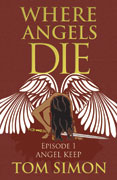
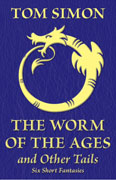
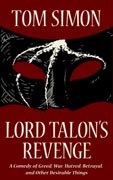

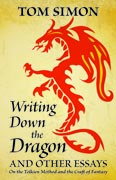
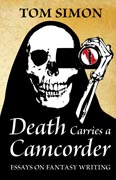
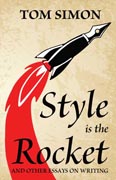
I once dithered away months of time arguing with a man who thought he was a robot. I had little hope of convincing him he was not; the effort was meant more to hone my skill and sharpen my own thoughts on the matter.
Had I had this essay at hand, however, the effort might have been more effective.
You draw distinctions between the various levels or layers of storytelling which (since all human life and thought is a divine story in which we are players) also apply somewhat to certain philosophical conundrums, most particularly the one mentioned above: determinism and materialism and the like regard the base layer of human thought and human action as real, and threat the high layers of symbolism, meaning, theme as epiphenomena, that is, mere side effects.
Bravo. Looking foreword to more
That’s a remarkable insight.
In Reflections on the Psalms, C. S. Lewis wrote:
‘One who contended that a poem was nothing but black marks on white paper would be unanswerable if he addressed an audience who couldn’t read. Look at it through microscopes, analyse the printer’s ink and the paper, study it (in that way) as long as you like; you will never find something over and above all the products of analysis whereof you can say “This is the poem”. Those who can read, however, will continue to say the poem exists.’
This actually was one of the germs of my idea for the layered model of storytelling. You’ve brought it full circle, and showed that the development of the idea has increased applicability in the original context.